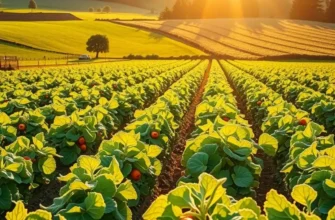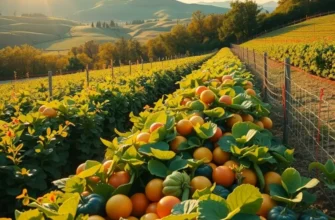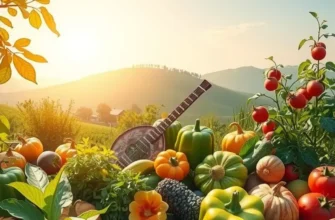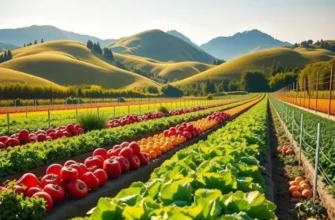Embracing sustainable food systems is crucial to combat climate change and environmental degradation. Food forests, which mimic natural ecosystems, offer a vibrant solution for environmentally-conscious individuals. These diverse agricultural landscapes not only provide an abundance of nourishment but also restore biodiversity and promote ecological balance. By understanding the benefits and practicalities of food forests, you can make informed, eco-friendly decisions that will transform your relationship with food and the planet.
The Essence of Food Forests: How They Work
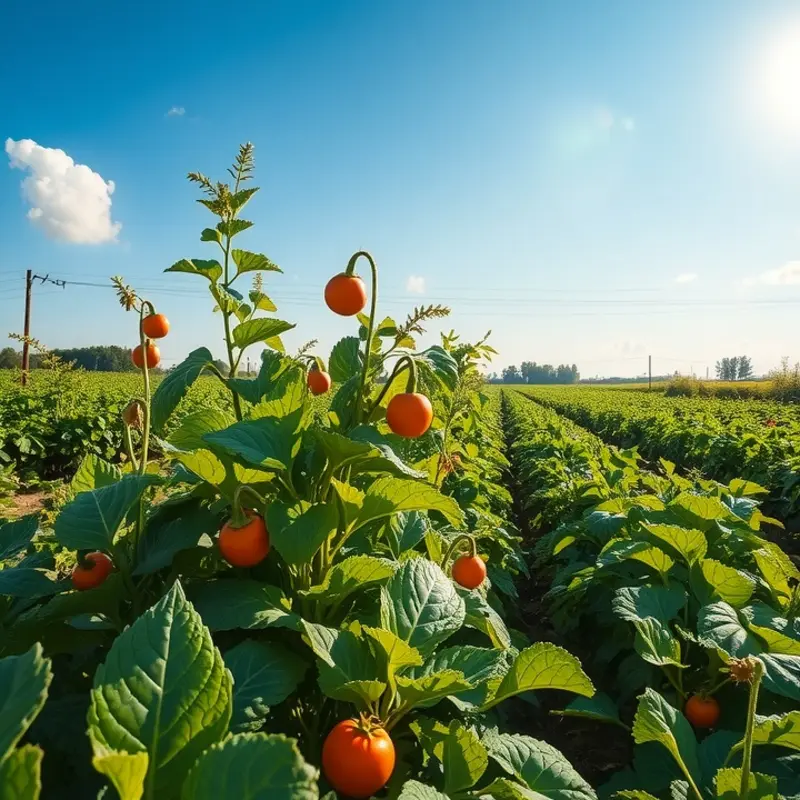
Food forests, also known as forest gardens, embody the synergy of natural ecosystems and human ingenuity. At their core, they are designed to mimic natural forests through an eclectic blend of species, making them both productive and resilient. They integrate trees, shrubs, and herbaceous plants in multiple layers, each performing a specific role to ensure the overall health of the system.
A typical food forest comprises seven layers: canopy, understory, shrubs, herbaceous, rhizosphere (root crops), soil surface (ground covers), and vertical (climbers). Each layer is meticulously planned to support biodiversity, crowding out weeds by occupying different vertical spaces while cycling nutrients efficiently. For instance, nitrogen-fixing plants enrich the soil, providing essential nutrients for fruit-bearing trees and shrubs.
The diversity of species within a food forest is staggering. From fruit trees like apple and pear to nitrogen-fixing shrubs such as sea buckthorn and herbs that deter pests—every plant has a purpose. This polyculture approach contrasts starkly with monoculture farming, which depletes soil nutrients and encourages pest outbreaks.
Food forests not only provide a haven for wildlife, enhancing biodiversity, but they also create a self-sustaining ecosystem. Pollinators find refuge among the mix of flowering species, while beneficial insects help keep pests in check. The soil structure improves over time due to organic matter decomposition, enhancing water retention and reducing erosion.
From an environmental perspective, the benefits of food forests are profound. They sequester carbon, contribute to soil health, and use natural pest management strategies, eliminating the need for synthetic inputs. They also promote water conservation by improving soil water retention. These aspects make food forests an indispensable tool in combating climate change.
Socially, food forests encourage community involvement and education. They serve as living classrooms where individuals can learn about sustainable agriculture and permaculture principles. Communities benefit from shared knowledge and resources, often translating to increased food security and social cohesion.
On a personal level, cultivating a food forest can transform one’s relationship with food [^1^]. It promotes seasonal eating and demands a shift towards more eco-friendly lifestyle choices such as reducing food waste. For example, using the diverse harvest from a food forest encourages creativity in the kitchen, as seen in easy sauce simmering techniques.
Health-wise, food forests offer a bounty of fresh, nutrient-rich produce. This encourages a diet high in fruits, vegetables, and herbs, bolstering overall well-being. Moreover, the simple act of tending to a garden is known to reduce stress and improve mental health.
In conclusion, food forests are not just a solution for the future—they are a crucial step toward achieving sustainable, eco-friendly living in the present. Adopting this approach at community and personal levels can lead to profound ecological, social, and health benefits, making a significant positive impact on both local and global scales.
Cultivating Your Own Sustainable Oasis
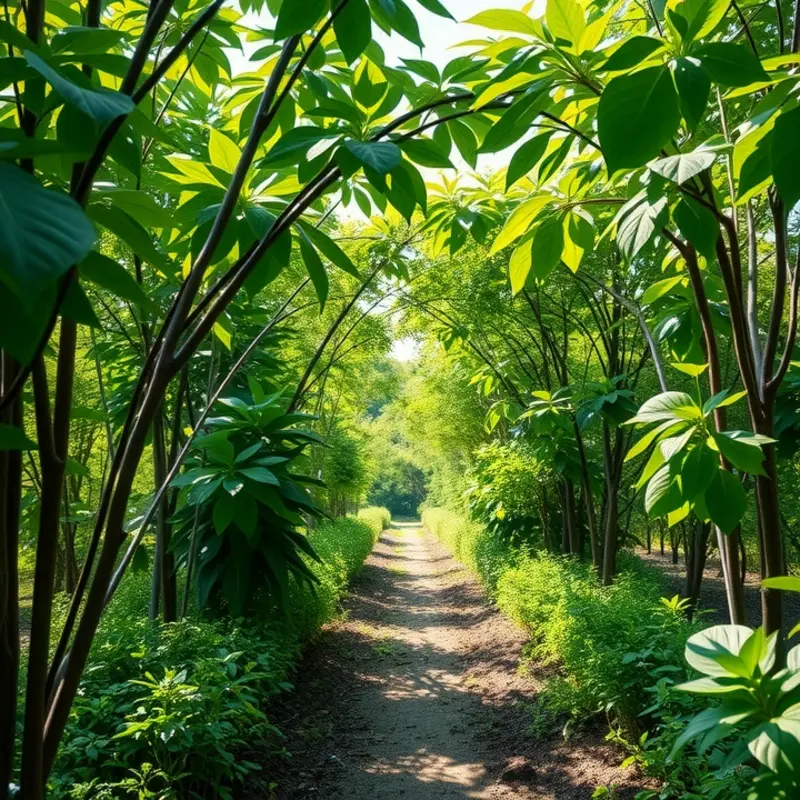
Creating a personal or community food forest offers more than just food production—it creates a living ecosystem. Success begins with thoughtful site selection. Choose an area that receives ample sunlight, has good drainage, and is safe from urban pollutants. If possible, select a location with varied topography to encourage biodiversity.
Plant selection is equally vital. Consider native species adapted to local conditions, reducing resource input. Opt for a diverse range of plants, including fruit trees, shrubs, ground cover, and climbers to occupy different layers of the forest. Integrating companion planting strategies can maximize growth and soil health. For more on incorporating sustainable food sources, explore our easy plant-based eating guide.
Implement sustainable practices inspired by permaculture principles. Emphasize energy conservation, closed-loop systems for waste, and natural water harvesting techniques like swales or rain gardens. Mulching with leaf litter enhances soil fertility and retains moisture. Encouraging pollinators through wildflower strips or insect hotels can boost productivity.
Education is key to sustainable food forest success. Many online resources and local institutions offer permaculture workshops and courses. Community engagement multiplies these benefits, turning learning into active participation. Forming a network with local gardeners or joining community garden initiatives fosters knowledge sharing.
Success stories abound, demonstrating the transformative power of food forests. One small town converted a wasteland into a lush oasis, producing fresh food for local schools. A family in an urban setting replaced their lawn with a polyculture of fruits and vegetables, reducing grocery costs and increasing food security. These examples highlight the potential impact when individuals and communities embrace sustainable practices.
Engage in community efforts, participate in workshops, and share your story with others. Creating your sustainable oasis is not just about growing food; it is about nurturing a robust, eco-friendly future.
Final words
Food forests represent a conscious choice to nurture our planet while providing nutritional abundance. As members of an increasingly eco-aware society, embracing such regenerative practices not only fosters resilience in our food systems but also enriches local biodiversity. By understanding the workings of food forests and actively engaging in their cultivation, everyone can play a role in creating a healthier environment. Transitioning to sustainable food sources through food forests isn’t just an investment in your meals; it’s a commitment to the wellbeing of the Earth and future generations. Together, let’s cultivate a greener, more sustainable world.


